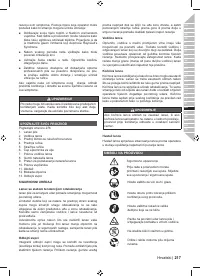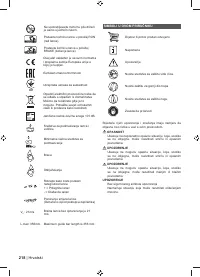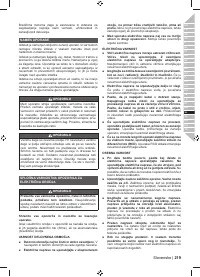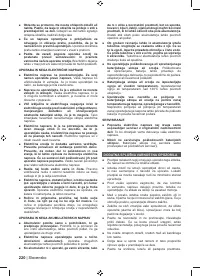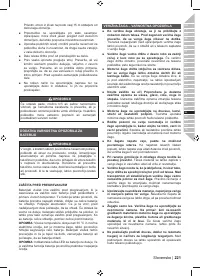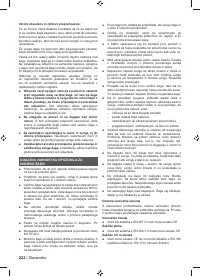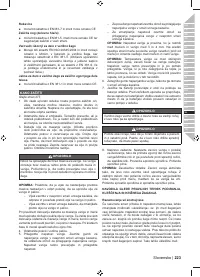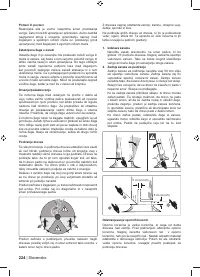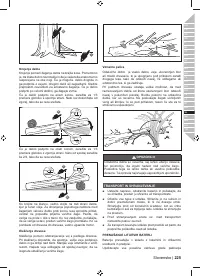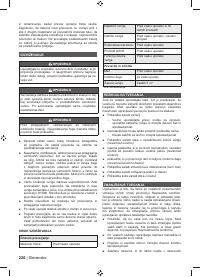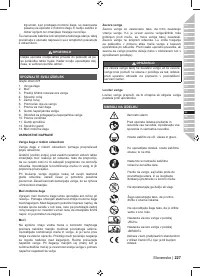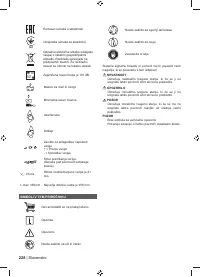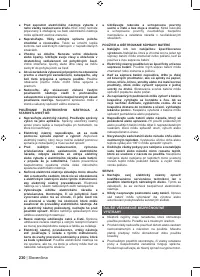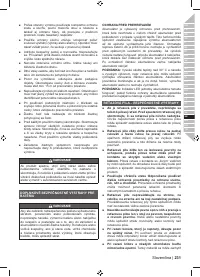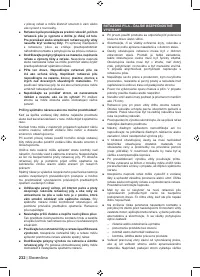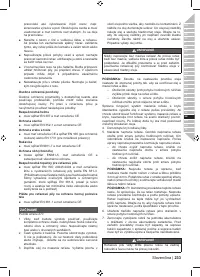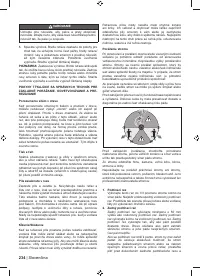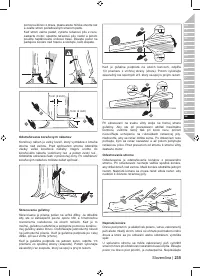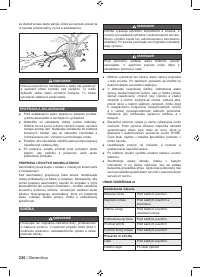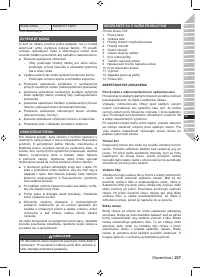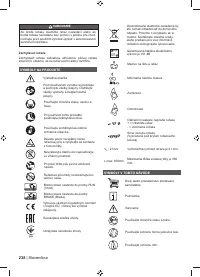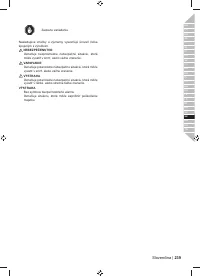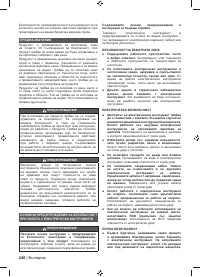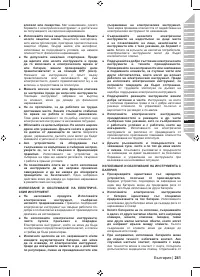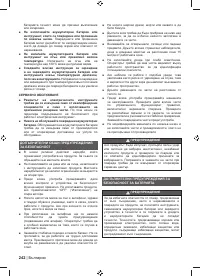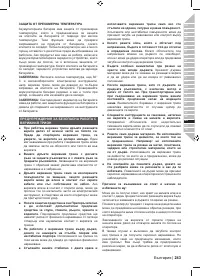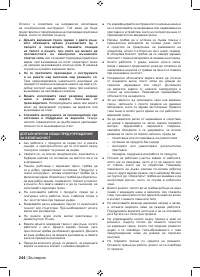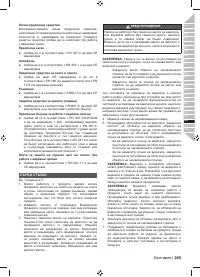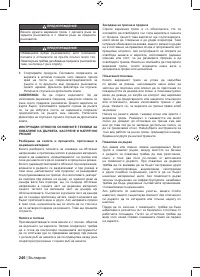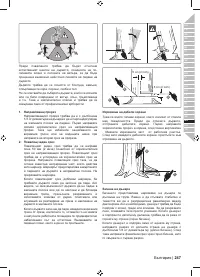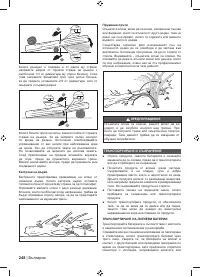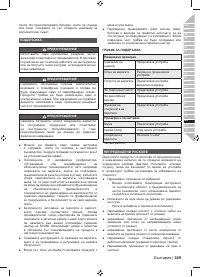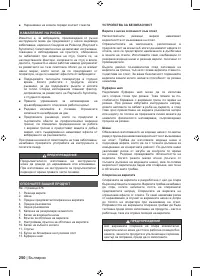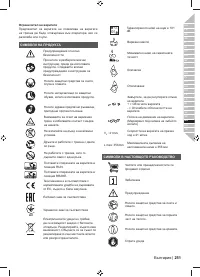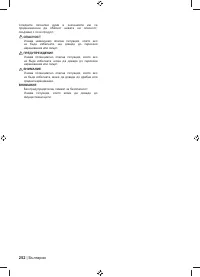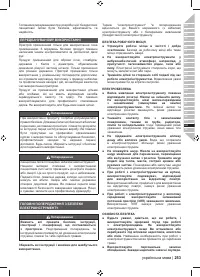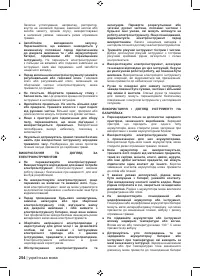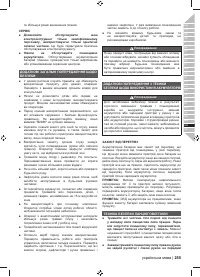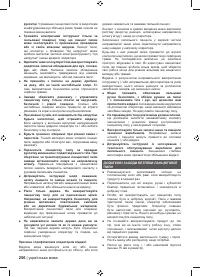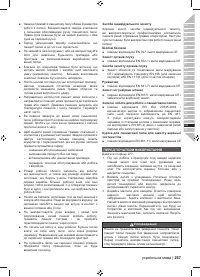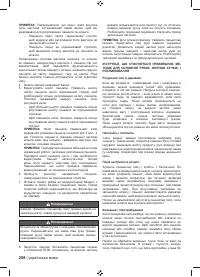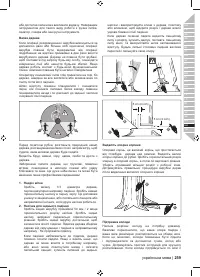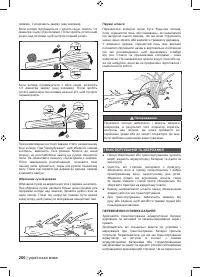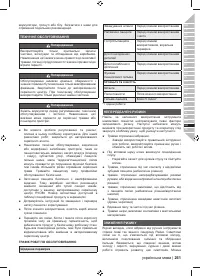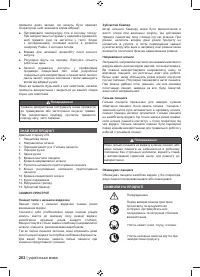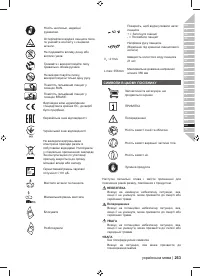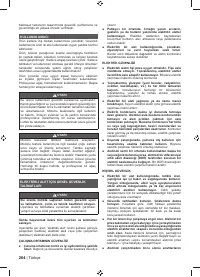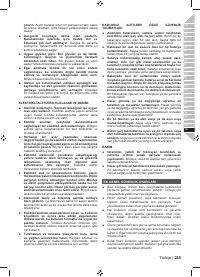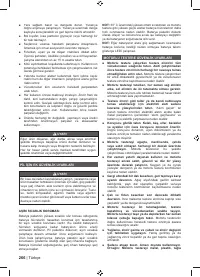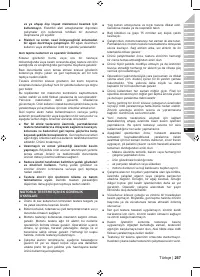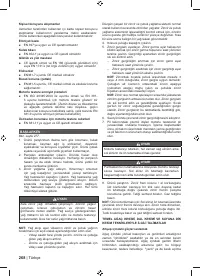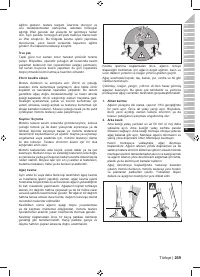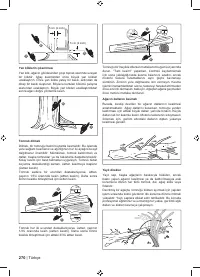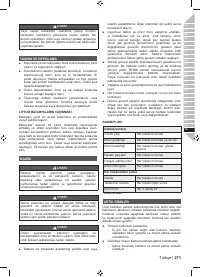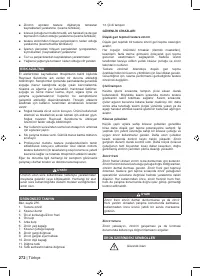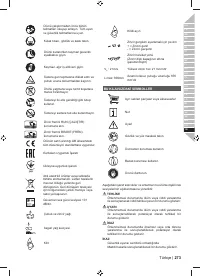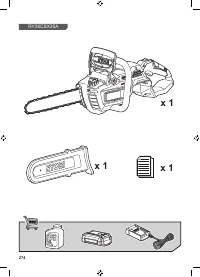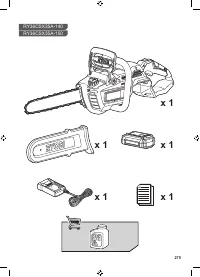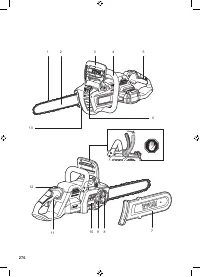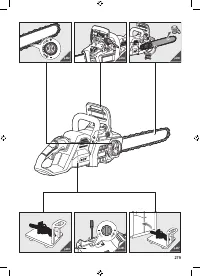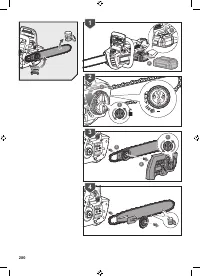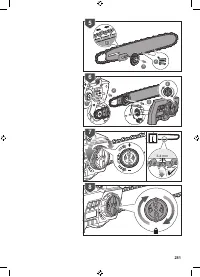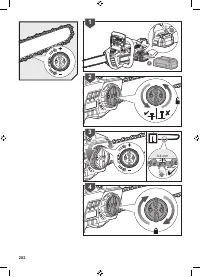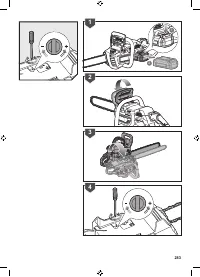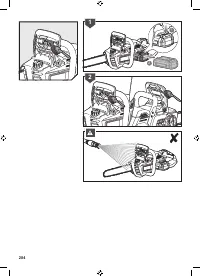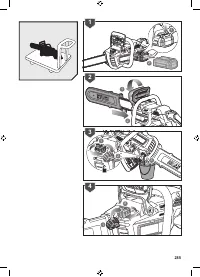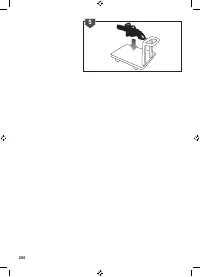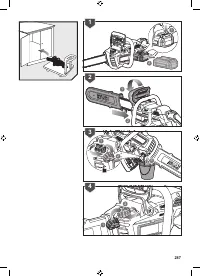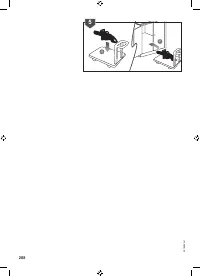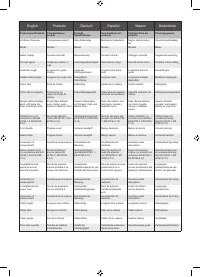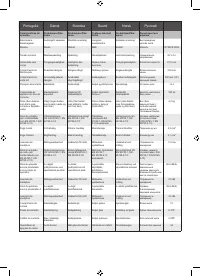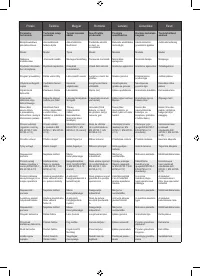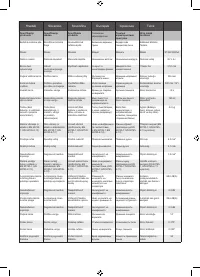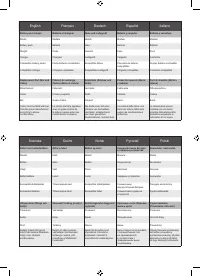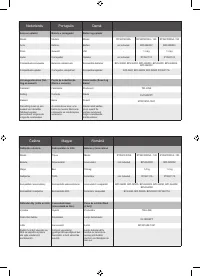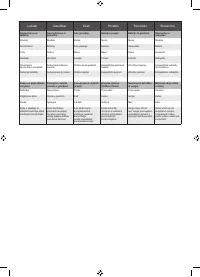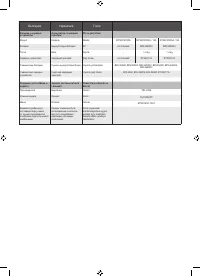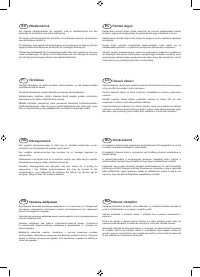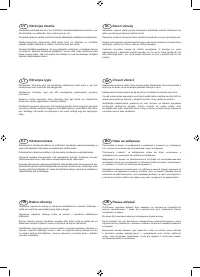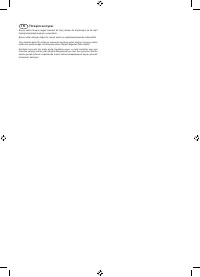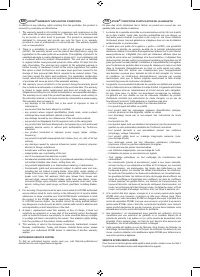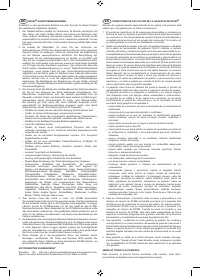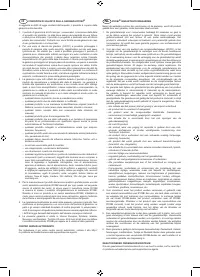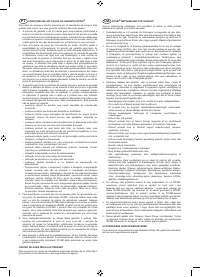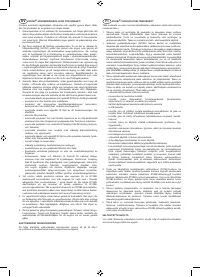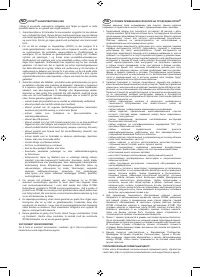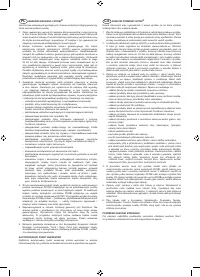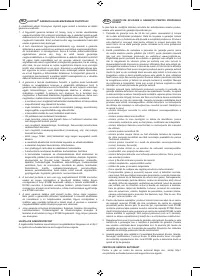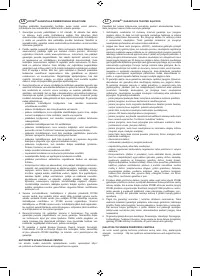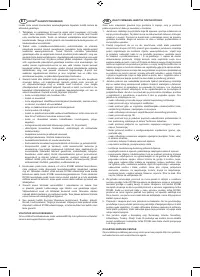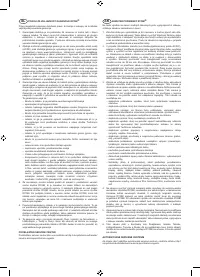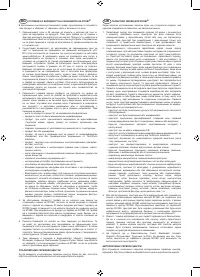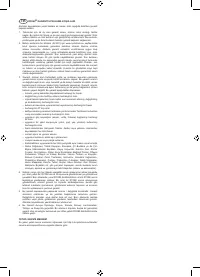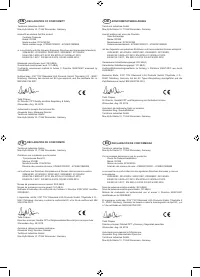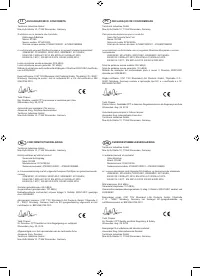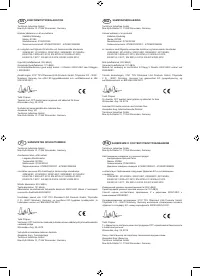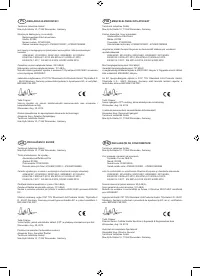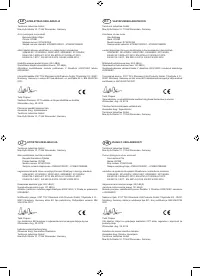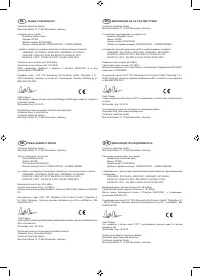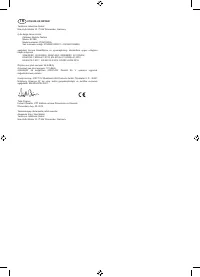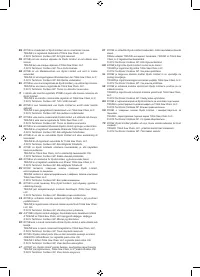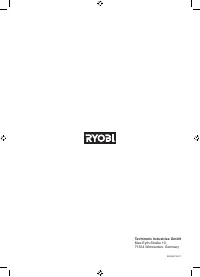Электропилы Ryobi RY36CSX35A-0 - инструкция пользователя по применению, эксплуатации и установке на русском языке. Мы надеемся, она поможет вам решить возникшие у вас вопросы при эксплуатации техники.
Если остались вопросы, задайте их в комментариях после инструкции.
"Загружаем инструкцию", означает, что нужно подождать пока файл загрузится и можно будет его читать онлайн. Некоторые инструкции очень большие и время их появления зависит от вашей скорости интернета.
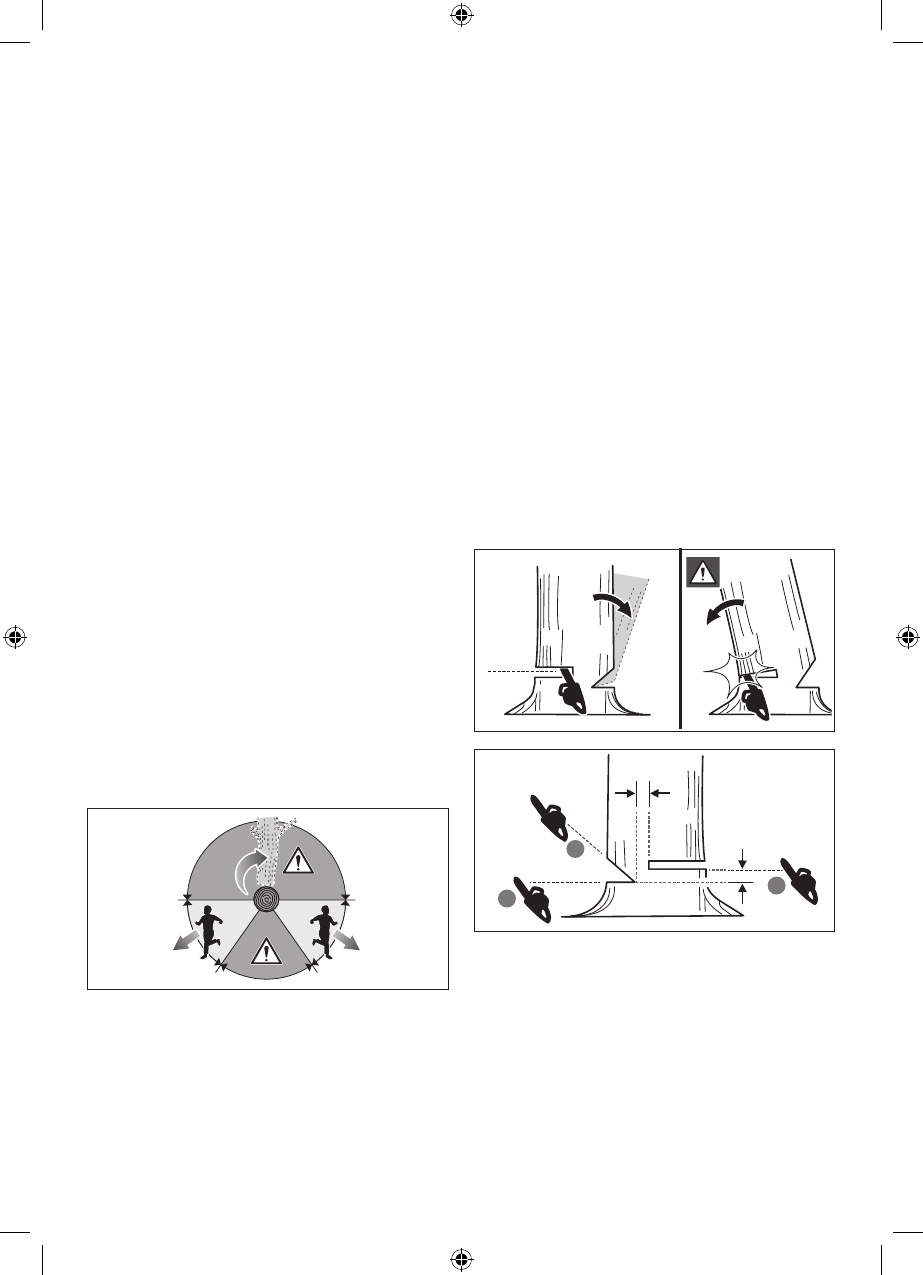
6
| English
Saw jammed in the cut
Stop the chainsaw and make it safe. Do not try to force the
chain and bar out of the cut as this is likely to break the
chain, which may swing back and strike the operator. This
situation normally occurs because the wood is incorrectly
supported and forcing the cut to close under compression
thereby pinching the blade. If adjusting the support does
not release the bar and chain, use wooden wedges or a
lever to open the cut and release the saw. Never try to start
the chainsaw when the guide bar is already in a cut or kerf.
Skating/Bouncing
When the chainsaw fails to dig in during a cut, the guide
bar can dangerously begin hopping or skidding along the
surface of the log or branch, possibly resulting in the loss
of control of the chainsaw. To prevent or reduce skating or
bouncing, always use the saw with both hands. Make sure
that the saw chain establishes a groove for cutting.
Never cut small, fl exible branches or brushes with your
chainsaw. Their size and fl exibility can easily cause the
saw to bounce towards you or bind up with enough force
to cause a kickback. The best tool for that kind of work is
a hand saw, pruning shears, an axe or other hand tools.
Felling a tree
When bucking and felling operations are being performed
by two or more persons at the same time, the felling
operations should be separated from the bucking operation
by a distance of at least twice the height of the tree being
felled. Trees should not be felled in a manner that would
endanger any person, strike any utility line, or cause any
property damage. If the tree does make contact with any
utility line, the company should be notifi ed immediately.
The chainsaw operator should keep on the uphill side of
the terrain as the tree is likely to roll or slide downhill after
it is felled.
An escape path should be planned and cleared as
necessary before cuts are started. The escape path should
extend back and diagonally to the rear of the expected line
of fall.
Before felling is started, consider the natural lean of the
tree, the location of larger branches and the wind direction
to judge which way the tree will fall.
Remove dirt, stones, loose bark, nails, staples and wire
from the tree.
Do not attempt to fell trees that are rotten or have been
damaged by wind, fi re, lightning, etc. This is extremely
dangerous and should only be completed by professional
tree surgeons.
1. Notching undercut
Make the notch 1/3 the diameter of the tree,
perpendicular to the direction of falls. Make the lower
horizontal notching cut first. This will help to avoid
pinching either the saw chain or the guide bar when the
second notch is being made.
2. Felling back cut
Make the felling back cut at least 50 mm (2 inches)
higher than the horizontal notching cut. Keep the felling
back cut parallel to the horizontal notching cut. Make
the felling back cut so enough wood is left to act as
a hinge. The hinge wood keeps the tree from twisting
and falling in the wrong direction. Do not cut through
the hinge.
As the felling gets close to the hinge, the tree should
begin to fall. If there is any chance that the tree may
not fall in desired direction or it may rock back and
bind the saw chain, stop cutting before the felling back
cut is complete, and use wedges of wood, plastic or
aluminium to open the cut and drop the tree along the
desired line of fall.
When the tree begins to fall, remove the chainsaw from
the cut, stop the motor, put the chainsaw down, then
use the retreat path planned. Be alert for overhead
limbs falling, and watch your footing.
1
3
2
5 cm (2 inch)
5 cm (2 inch)
Removing buttress roots
A buttress root is a large root extending from the trunk of
the tree above the ground. Remove large buttress roots
prior to felling. Make the horizontal cut into the buttress
fi rst, followed by the vertical cut. Remove the resulting
loose section from the work area. Follow the correct tree
felling procedure after you have removed the large buttress
roots.
Содержание
- 125 ТРЕБОВАНИЯ БЕЗОПАСНОСТИ ПРИ ИСПОЛЬЗОВАНИИ
- 128 ПЕРЕД НАЧАЛОМ РАБОТЫ
- 130 обеспечить; Сучкование дерева; ТРАНСПОРТИРОВКА И ХРАНЕНИЕ
- 131 ПЕРЕВОЗКА ЛИТИЕВЫХ БАТАРЕЙ; ОБСЛУЖИВАНИЕ; БУДЬТЕ ВСЕГДА ОСТОРОЖНЫ
- 132 СНИЖЕНИЕ РИСКА; ИЗУЧИТЕ УСТРОЙСТВО; УСЛОВНЫЕ ОБОЗНАЧЕНИЯ НА ПРОДУКТЕ
- 133 ОПАСНО
- 134 Дата изготовления; Месяц Январь Февраль Март Апрель; Неделя
- 292 Русский
Характеристики
Остались вопросы?Не нашли свой ответ в руководстве или возникли другие проблемы? Задайте свой вопрос в форме ниже с подробным описанием вашей ситуации, чтобы другие люди и специалисты смогли дать на него ответ. Если вы знаете как решить проблему другого человека, пожалуйста, подскажите ему :)


























































































































































































































